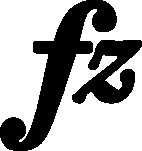



An extensive, Chopin entry on the 1st beat of the bar is problematic to interpret. At first glance, it seems that the right-hand-side part of the entry is a letter 'p.' Depending on how we interpret the element that precedes the 'p,' we can receive either  or
or 
 , or
, or 
 – much more frequent for Chopin. The placement of a possible indication constitutes an equally difficult problem: the entry may be linked directly to the 3rd, 4th or 5th semiquaver of the bar. However, being aware of the Chopin inclination, revealing itself from time to time, to move indications to within the range of their validity, we also have to include a possibility that the indication shall refer to the beginning of the bar.
– much more frequent for Chopin. The placement of a possible indication constitutes an equally difficult problem: the entry may be linked directly to the 3rd, 4th or 5th semiquaver of the bar. However, being aware of the Chopin inclination, revealing itself from time to time, to move indications to within the range of their validity, we also have to include a possibility that the indication shall refer to the beginning of the bar.
According to us, it also cannot be excluded that the introduced signs are +8, which would refer to E at the beginning of the bar. Such an enhancement of the bass in the culminant point of the ascending sequence of thirds seems to be quite justified. It would be a different implementation of an idea written in A, in which the bass octave appears a bar earlier. On the other hand, eights marking a bottom octave are always written under the note, which significantly reduces the authenticity of this interpretation.
at the beginning of the bar. Such an enhancement of the bass in the culminant point of the ascending sequence of thirds seems to be quite justified. It would be a different implementation of an idea written in A, in which the bass octave appears a bar earlier. On the other hand, eights marking a bottom octave are always written under the note, which significantly reduces the authenticity of this interpretation.
Taking into account the above doubts, we do not include this entry in the main text; moreover, we place each of the possibilities in brackets.
Compare the passage in the sources »
category imprint: Graphic ambiguousness; Differences between sources; Corrections & alterations
issues: Annotations in teaching copies, Annotations in FED
notation: Verbal indications





